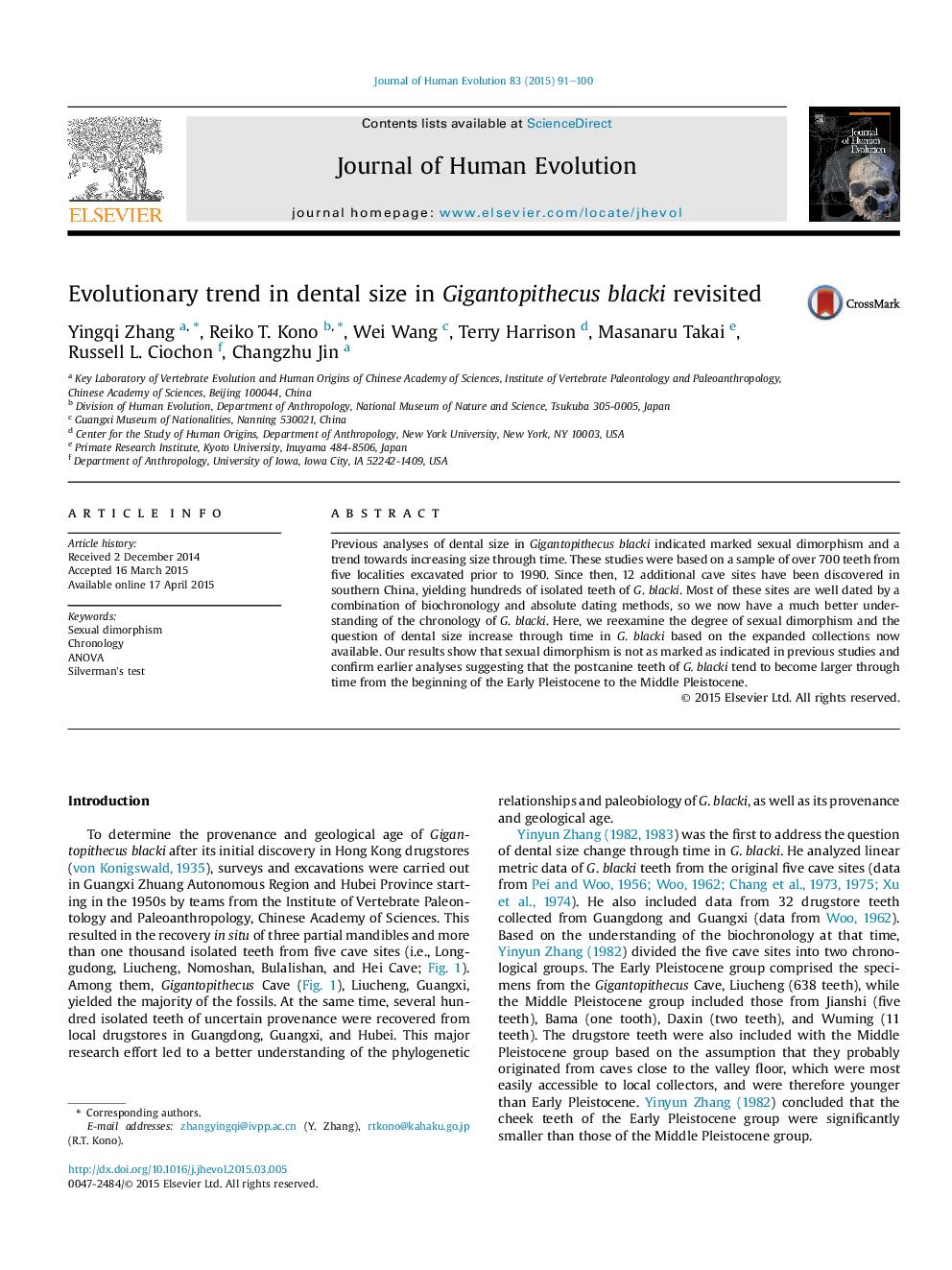| Article ID | Journal | Published Year | Pages | File Type |
|---|---|---|---|---|
| 4555950 | Journal of Human Evolution | 2015 | 10 Pages |
Previous analyses of dental size in Gigantopithecus blacki indicated marked sexual dimorphism and a trend towards increasing size through time. These studies were based on a sample of over 700 teeth from five localities excavated prior to 1990. Since then, 12 additional cave sites have been discovered in southern China, yielding hundreds of isolated teeth of G. blacki. Most of these sites are well dated by a combination of biochronology and absolute dating methods, so we now have a much better understanding of the chronology of G. blacki. Here, we reexamine the degree of sexual dimorphism and the question of dental size increase through time in G. blacki based on the expanded collections now available. Our results show that sexual dimorphism is not as marked as indicated in previous studies and confirm earlier analyses suggesting that the postcanine teeth of G. blacki tend to become larger through time from the beginning of the Early Pleistocene to the Middle Pleistocene.
